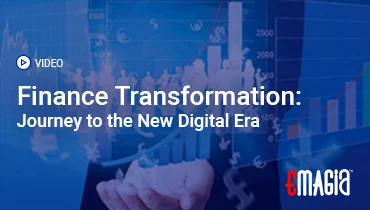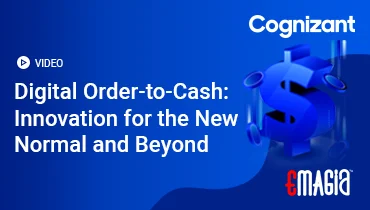In today’s dynamic business landscape, managing accounts receivable effectively is not just about sending invoices; it’s about strategic financial health. Businesses, regardless of their size, face the constant challenge of ensuring timely payments while maintaining healthy customer relationships. This is where modern credit control software steps in, transforming a traditionally manual, often reactive process into a proactive, automated, and highly efficient operation. It’s more than just a tool; it’s a comprehensive credit management solution designed to optimize your entire order-to-cash cycle.
This in-depth guide will explore the essential key features of credit control software, detailing how these powerful applications empower businesses to accelerate cash collection, minimize bad debt, and gain unparalleled financial visibility. From automated workflows to intelligent analytics, we’ll uncover how the right credit management platform can be a game-changer for your financial stability and growth. Prepare to discover how these innovative credit management software packages are redefining best practices in accounts receivable management.
The Core Pillars: Essential Credit Control Software Capabilities
At its heart, effective credit control hinges on a few fundamental capabilities that modern software excels at. These aren’t just isolated functions but interconnected features that work in harmony to create a robust credit management system software. Understanding these core pillars is crucial for anyone looking to implement a truly impactful solution.
Automated Collections Workflow Management
One of the most significant advantages of a dedicated accounts receivable collections software is its ability to automate the entire collections process. Gone are the days of manual spreadsheets and forgotten follow-up calls. This feature orchestrates a series of actions, ensuring consistency and timeliness in your collection efforts.
- Intelligent Dunning and Reminder Systems: The software automatically sends out payment reminders via email, SMS, or even personalized calls based on predefined schedules. These aren’t generic messages; they can be tailored to specific customer segments, invoice aging, and payment history. This proactive approach significantly reduces the number of overdue accounts.
- Workflow Customization: Businesses can design their own collection workflows, setting rules for when reminders are sent, when accounts are escalated, and what communication channels are used. This flexibility allows the cash collection software to adapt to unique business needs and customer behaviors.
- Automated Task Assignment: The system can automatically assign follow-up tasks to your collections team, ensuring that no overdue invoice slips through the cracks. This boosts productivity and ensures that your team focuses on high-value interactions rather than administrative chores.
This automation is the bedrock of efficient debtor management software, freeing up your team to focus on more complex cases and relationship building.
Comprehensive Credit Risk Assessment and Management
Before you even send an invoice, a good credit control software helps you assess the risk associated with extending credit. This proactive approach is vital for minimizing bad debt and making informed decisions about payment terms and credit limits.
- Automated Credit Scoring: The system can integrate with external credit bureaus and internal historical data to automatically generate credit scores for new and existing customers. This provides a quantifiable measure of risk, guiding your credit approval process.
- Real-Time Credit Monitoring: A robust credit management tool continuously monitors customer creditworthiness, alerting your team to any changes in their financial health or payment behavior. This early warning system allows you to adjust credit terms or initiate collections proactively.
- Credit Limit Management: The software helps you set, adjust, and enforce credit limits based on risk assessments, ensuring you don’t overextend credit to high-risk clients. This is a crucial aspect of responsible credit management automation.
By leveraging these features, businesses can significantly reduce their exposure to financial risk, ensuring that every credit decision is backed by data.
Seamless Integration with Existing Financial Systems
No credit control software operates in a vacuum. Its true power is unlocked through seamless integration with your existing ERP (Enterprise Resource Planning) and accounting systems. This ensures data consistency, reduces manual data entry, and provides a unified view of your financial operations.
- ERP and Accounting Software Sync: The system automatically pulls invoice data, customer information, and payment records from your ERP (like SAP or Oracle) or accounting software (like QuickBooks or Xero). This eliminates the need for duplicate data entry and ensures that your collections team always has the most up-to-date information.
- Data Consistency Across Platforms: With integrated systems, any update in one platform is reflected across all connected systems. This consistency is vital for accurate reporting, reconciliation, and audit readiness. It also means your accounts receivable management software is always working with precise data.
- Streamlined Data Flow: Integration ensures that information flows effortlessly between departments, from sales and order processing to finance and collections. This minimizes delays and improves overall operational efficiency.
The ability to integrate seamlessly makes the software credit management a central hub for your financial data, enhancing decision-making and operational agility.
Advanced Functionalities: Beyond the Basics of Credit Control Software
While core features form the backbone, advanced functionalities elevate credit control software from a mere tool to a strategic asset. These features provide deeper insights, enhance customer interactions, and offer greater control over your receivables.
Robust Reporting and Analytics Capabilities
Data is king, and a powerful credit management platform provides the insights you need to make informed decisions and continuously improve your collections strategy. These features offer a granular view of your accounts receivable performance.
- Real-Time Dashboards: Visualize key performance indicators (KPIs) such as Days Sales Outstanding (DSO), collection effectiveness, aging reports, and bad debt percentages at a glance. These dashboards provide immediate insights into your financial health.
- Predictive Analytics: Leveraging machine learning, some receivables analytics software can forecast payment trends, identify customers likely to default, and predict future cash flow. This allows for proactive intervention and better financial planning.
- Customizable Reports: Generate detailed reports tailored to specific needs, whether for internal review, stakeholder presentations, or audit purposes. This flexibility ensures you always have the data you need, presented in a clear and understandable format.
These analytical capabilities transform raw data into actionable intelligence, making your receivable management software a strategic decision-making tool.
Efficient Dispute Management and Resolution
Disputes are an inevitable part of accounts receivable, but how you manage them can significantly impact your cash flow and customer relationships. Effective credit control software includes features specifically designed to streamline dispute resolution.
- Centralized Dispute Tracking: All dispute-related information, including communication history, supporting documents, and resolution status, is stored in one central location. This ensures that your team has a complete overview of every dispute.
- Automated Workflow for Resolution: The software can guide your team through a structured resolution process, assigning tasks, setting deadlines, and escalating issues as needed. This ensures timely resolution and prevents disputes from delaying payments unnecessarily.
- Customer Communication Tools: Facilitate clear and consistent communication with customers regarding disputes, ensuring they are kept informed throughout the resolution process. This transparency helps maintain positive customer relationships even during challenging times.
By streamlining dispute management, the software helps to reduce payment delays and improve customer satisfaction, making it an invaluable part of your accounts receivable management software.
Secure Online Payment Portal Integration
Making it easy for customers to pay is a fundamental aspect of accelerating cash collection. Modern credit control software often includes or integrates with secure online payment portals, offering convenience and flexibility.
- Self-Service Payment Options: Customers can log into a secure portal to view their outstanding invoices, payment history, and make payments using various methods (credit card, ACH, etc.). This empowers customers and reduces the need for manual intervention from your team.
- Real-Time Payment Updates: Once a payment is made through the portal, the system automatically updates your accounts receivable records in real time. This eliminates delays in cash application and provides immediate visibility into your cash position.
- Automated Remittance Matching: The system automatically matches incoming payments from the portal to the corresponding invoices, further streamlining the cash application process. This is a key feature for any effective get paid credit collection software.
Offering a seamless payment experience through an integrated portal not only speeds up collections but also enhances customer satisfaction, making your business easier to work with.
Strategic Advantages: Why Invest in Credit Control Software?
Beyond the individual features, the cumulative benefits of implementing a comprehensive credit control software are transformative. These advantages impact your financial health, operational efficiency, and overall business growth.
Accelerated Cash Flow and Reduced DSO
The primary driver for many businesses adopting a credit management solution is the promise of faster cash flow. By automating reminders, streamlining collections, and providing real-time insights, the software significantly reduces your Days Sales Outstanding (DSO) – the average number of days it takes to collect payment after a sale. Lower DSO means more working capital available for your business to invest and grow. This is the ultimate goal of any cash collection software.
Minimized Bad Debt and Credit Risk Mitigation
Proactive credit risk assessment and continuous monitoring help identify potential payment problems before they escalate. By setting appropriate credit limits and taking timely action on at-risk accounts, businesses can significantly reduce their exposure to bad debt write-offs. This protective aspect of credit management software solutions directly impacts your profitability and financial stability.
Enhanced Operational Efficiency and Productivity
Automating repetitive tasks like sending reminders, generating reports, and tracking overdue invoices frees up your finance and collections teams. They can then focus on more strategic activities, such as resolving complex disputes, building stronger customer relationships, and analyzing financial data for future planning. This boost in productivity is a direct result of effective credit management automation.
Improved Customer Relationships and Experience
While collections can sometimes strain relationships, a well-implemented debtor management software can actually improve customer satisfaction. Automated, polite reminders, flexible payment options through portals, and transparent communication foster trust and convenience. Customers appreciate clear communication and easy ways to manage their accounts, even when dealing with overdue payments. This focus on experience is a key differentiator for modern accounts receivable app solutions.
Ensured Compliance and Audit Readiness
Navigating the complex landscape of financial regulations and compliance requirements can be challenging. A good credit control software helps ensure that your collection practices adhere to legal standards, providing audit trails of all communication and actions. This built-in compliance reduces legal risks and makes audits smoother and less time-consuming. This is particularly important for businesses looking for debt collection software UK or other region-specific compliance.
Choosing the Right Credit Control Software Packages
With a multitude of credit management software packages available, selecting the right one for your business requires careful consideration. It’s not just about features; it’s about finding a solution that aligns with your specific needs, budget, and existing infrastructure.
Key Considerations for Selection
- Scalability: Does the credit management application support your current volume of invoices, and can it grow with your business?
- Integration Capabilities: How well does it integrate with your existing ERP, CRM, and accounting systems? Look for robust APIs and pre-built connectors.
- User-Friendliness: Is the interface intuitive and easy for your team to learn and use? A complex system can lead to low adoption rates.
- Support and Training: What kind of customer support and training does the vendor offer? Ongoing support is crucial for long-term success.
- Security: Does the software meet industry standards for data security and privacy? Protecting sensitive financial data is paramount.
- Cost: Evaluate the total cost of ownership, including subscription fees, implementation costs, and any additional charges for integrations or advanced features.
Considering these factors will help you narrow down the options and choose a credit management software that truly meets your organizational requirements.
Overcoming Challenges in Credit Management Automation
While the benefits of credit management automation are clear, implementing new systems can present challenges. Being aware of these potential hurdles and planning for them can ensure a smoother transition and maximize your return on investment.
Data Migration and Integration Complexities
Moving existing customer and invoice data into a new credit control system software can be complex, especially for businesses with large historical datasets. Ensuring data accuracy and integrity during migration is critical. Additionally, integrating the new system with multiple existing platforms can sometimes require custom development or extensive configuration.
Solution: Work closely with your chosen vendor’s implementation team. They should have experience with data migration and integration best practices. Prioritize a phased rollout if necessary, and ensure thorough testing at each stage. Data cleansing before migration can also prevent issues.
Resistance to Change from Staff
Employees accustomed to manual processes may resist adopting new technologies. Fear of the unknown, perceived complexity, or a lack of understanding of the benefits can hinder adoption. This is a common challenge with any new software credit management implementation.
Solution: Involve key stakeholders and end-users early in the selection and implementation process. Clearly communicate the benefits of the new system, emphasizing how it will make their jobs easier and more efficient. Provide comprehensive training and ongoing support, and celebrate early successes to build momentum and buy-in.
Maintaining Human Touch in Collections
While automation is powerful, collections often require a human touch, especially for sensitive or complex cases. The concern is that an automated online debt collection software might depersonalize interactions and damage customer relationships.
Solution: Design your automated workflows to handle routine reminders, freeing up your team to focus on high-value, empathetic interactions. The software should provide a consolidated view of customer communication history, allowing your team to pick up conversations seamlessly. Use customizable communication templates that maintain a professional and respectful tone.
Emagia: Your Partner in Advanced Credit Control and Receivables Transformation
In the complex world of modern finance, achieving optimal credit control and efficient accounts receivable management is paramount. Emagia stands at the forefront of this transformation, offering a comprehensive suite of AI-powered solutions designed to elevate your credit and collections processes. Our platform goes beyond traditional credit control software by integrating advanced automation, predictive analytics, and intelligent workflows to deliver unparalleled results. With Emagia, businesses gain real-time visibility into credit risk, automate dunning and dispute resolution, and streamline cash application with remarkable accuracy. Our robust credit cloud software ensures seamless integration with your existing ERP systems, providing a unified view of your financial data. We empower your teams to shift from reactive chasing to proactive, strategic credit management, significantly reducing DSO, minimizing bad debt, and accelerating cash flow. Emagia is not just a vendor; we are a strategic partner committed to helping you achieve frictionless finance operations and sustainable growth.
FAQs about Credit Control Software and Receivables Management
What is credit control software?
Credit control software is a specialized application designed to help businesses manage their accounts receivable, assess customer creditworthiness, automate collection efforts, and improve cash flow by ensuring timely payments. It streamlines the process of chasing overdue invoices and minimizing bad debt.
How does credit management software improve cash flow?
A credit management software improves cash flow by automating payment reminders, prioritizing collection efforts based on risk, streamlining dispute resolution, and providing real-time insights into outstanding receivables. This reduces Days Sales Outstanding (DSO) and ensures a more predictable inflow of cash.
Can accounts receivable collections software integrate with my existing ERP system?
Yes, most modern accounts receivable collections software solutions are designed to integrate seamlessly with popular ERP (Enterprise Resource Planning) systems like SAP, Oracle, Microsoft Dynamics, and NetSuite, as well as various accounting software packages. This ensures data consistency and reduces manual data entry.
What are the benefits of using debtor management software?
Benefits of debtor management software include automated reminders, centralized tracking of customer interactions, improved cash flow, reduced administrative burden, better compliance with debt collection regulations, and enhanced customer relationships through clear and consistent communication.
What is the difference between credit control software and debt collection software UK?
While often used interchangeably, credit control software typically encompasses the entire credit lifecycle, from initial credit assessment to proactive collections. Debt collection software UK (or any region-specific term) often focuses more narrowly on the process of recovering overdue debts, sometimes implying more aggressive or late-stage collection activities, and must adhere to specific regional regulations.
Is a credit management app suitable for small businesses?
Absolutely. Many credit management app and software solutions are designed with scalability in mind, offering features and pricing tiers suitable for small and medium-sized enterprises (SMEs). They can significantly benefit from automation, even with a smaller volume of invoices, by freeing up valuable time and improving cash flow.
What role does AI play in receivables management systems?
AI in receivables management systems enhances capabilities like predictive analytics (forecasting payment behavior), intelligent dunning (optimizing reminder timing and content), automated cash application (matching payments to invoices with higher accuracy), and identifying at-risk accounts proactively. This leads to more efficient and effective collections.



